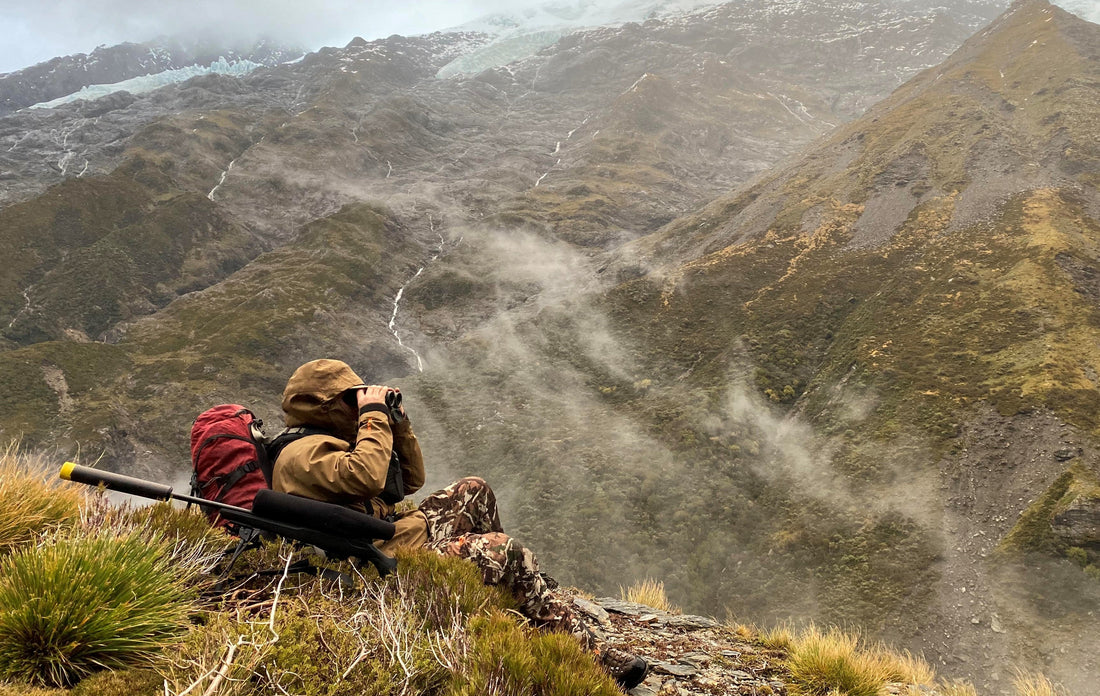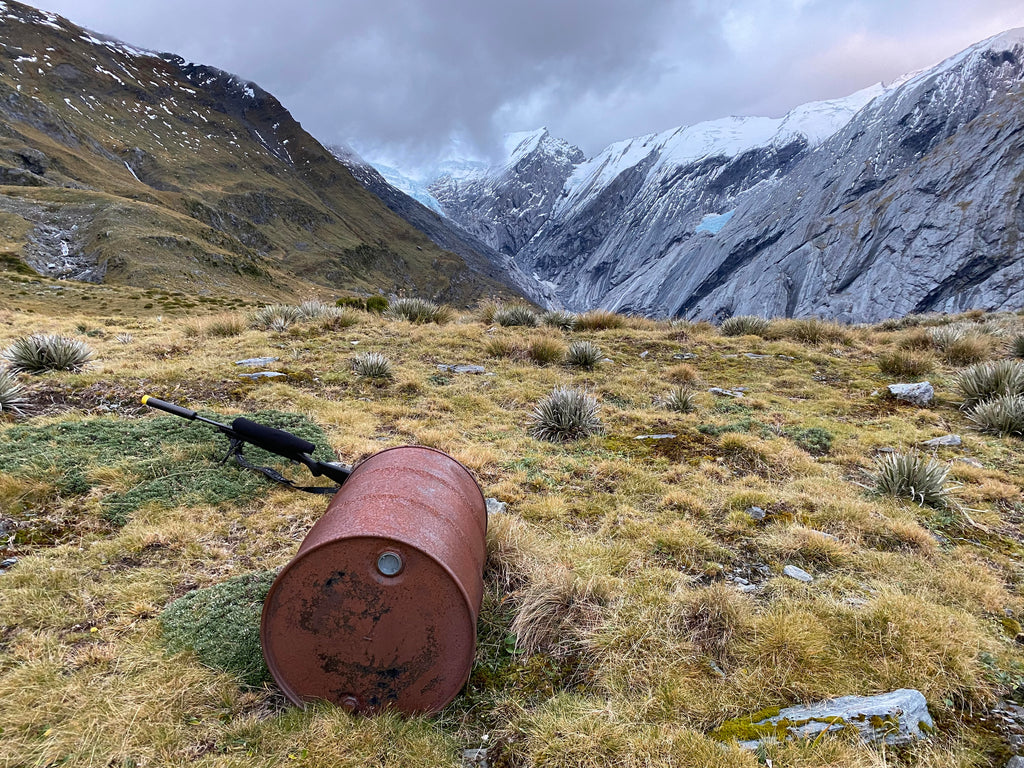
TAHR RUT STAGES
Share
We all would have heard someone say that “you’ll learn more from just sitting back and watching”, which is true for just about any hunting, but with bull tahr it’s especially relevant as their behaviour changes significantly through the different stages of the rut.
Understanding what you are seeing can help you work out where those really old bulls might be, or at least save you from wasting a heap of time in looking at one immature bull after another.

Shaun Monk looking down the Zora
Particularly as a result of our tahr ballot most people seem to focus on the first few periods, which is understandable as the weather is warmer and there is less chance of your camp being buried under knee deep snow. However often in those early periods, the rut hasn’t even started, or is really only just warming up, so there’s certainly pro’s and con’s to getting in early. But sitting back and watching a bit might actually help you be more effective when you get in there.
Outside of the rut one can see the bulls mobbed up into in rough age classes, so if you are hunting before the bulls depart from these mobs you will find yourself looking for that needle in the haystack of a mature mob of bulls. Just to confuse things at this time you are likely to see a few barely mature bulls jumping the gun and starting to hang off the nanny groups, often puffing them selves up like peacocks and attempting to staunch each other out. Don’t be fooled, - these guys will look big with their manes standing on end, but really they are just pups and will be given the boot as soon as those nannies start to cycle. They are lacking a stack of age rings at the base of their horns, and you will notice that older bulls will appear noticeably broader in the body and look heavy on their feet, walking with almost a bit of a swagger.

A good example of this is the above photo taken whilst driving past a high fence hunting property. You can see all the five to six year old bulls thinking they are in with a grin. But off to the side of this lot was a couple of truly mature bulls that had each bailed up a lone and obviously “hot” nanny, keeping them away from the rest of the mob and generally harassing them in the extreme.
Peak rut will see a bunch more of these nannies cycling and older bulls stepping in and shuffling off every cycling nanny they can muster, whilst those sub mature boys will just be circling around the fringes keeping a very wary eye on that master bull. Given helicopters have trained our tahr to now live in the scrub, the classic balls-up when hunting the scrub is to shoot the first bull you see around the nannies, only to see the big old bull you should have shot make his exit.
Peak rut is for sure an exciting time to be on the hill, with bulls just constantly on the move and walking all the ridgelines and new bulls showing up everyday.
Tail end of the rut will see the younger herd bulls back on the nannies, hoping for something to happen, while those older bulls have already sloped of to wherever it was they came from. Once a bull gets properly old, I’ve often found them flying solo, usually in a random creek bottom or somewhere with a heap of cover. My guess here is that they somewhat retire a bit old and sore, or perhaps they get that one real good beating and just call it quits. Either way if you can see what stage of the rut is happening, you’ll better know where to focus your time.
Last year we headed in for the second period of the ballot, expecting it to be early days for the rut. Escaping base camp after a full day of rain we took off up valley with gear for the night, spotting a few small mobs of nannies with no bull present. The old bulls we found were both solo with one right down in the scrub around the creek, and the other with one horn sitting way up high.

A nice bull that has worn off all his ridging
One very young bull was following a small nanny group around, then just before dark three 5-6 year old bulls showed up nearby and proceeded to puff up their manes and strut around parallel walking and trying to staunch each other out.
Carrying on we kept slipping closer to the big one horned bull, in the process passing up a nice bull down in the scrub who had worn off all his ridges. With our one horned bull now climbing even higher for the day, we set camp and worked out a plan. We would climb the saddle with the adjacent valley in the morning to then try and get above, and create an opportunity on the one horned bull.
In the meantime, we checked out one of the main tahr monitoring plots in the valley, spooking a hare from right beside the plot and then noticing the hare shit on the plot itself. Also there was a 40 gallon drum still half full of av-gas, rusting away and no doubt soon to leak it’s contents not 50 meters from one of these monitoring plots. I’m told this drum has been there for 30+ years which you would think would be ample time for someone or some department to pick it up and get it out of the wilderness area before it spills it’s guts.

Shaun Monk at the Zora monitoring plot

Hare crap in the controversial Zora monitoring plot
Mid morning saw us sidling through the steep broken country, trying to relocate our bull, but with no such luck it was back to the valley floor, across the river and back to the main camp. Of course, we then look up and see both the one horn bull, and our old boy down in the scrub. Typical tahr hunting, and with the helicopter showing up the next morning we were out of time.

Rubbish no more than 50m from the monitoring plot





